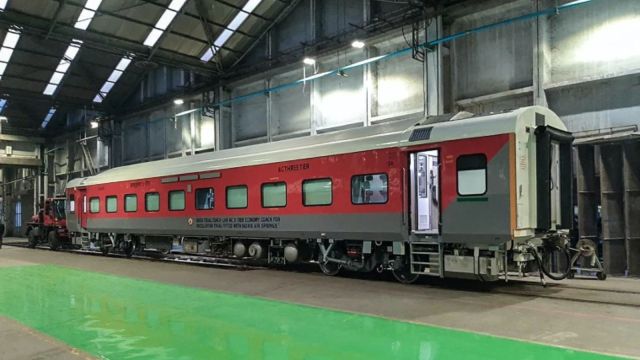While reiterating its earlier recommendation to increase passenger revenues by reviewing AC class fares, the parliamentary standing committee on Railways has said that the government should implement a dynamic pricing model for AC classes and premium trains. It must also ensure affordability for low-income passengers to balance “social obligations”, the committee said.
It added that a comprehensive fare review should be undertaken from time-to-time to align AC class fares with costs and ensure gradual, affordable adjustments for non-AC classes.

“The committee, therefore, recommends that Indian Railways should adopt a comprehensive, multi-pronged strategy to enhance net revenue while ensuring affordability for low-income passengers. This includes implementing dynamic pricing models for AC classes and premium trains, regularly reviewing flexi-fare schemes based on demand, and expanding non-fare revenue through initiatives like e-auction policies, advertising, and commercial utilisation of railway assets,” said the parliamentary committee in its report on action taken by Government on ‘Demands for Grants (2024-25) of the Ministry of Railways’, which was presented in the Lok Sabha on March 10, 2025.
The committee added: “The Committee also feels that in order to balance social obligations, Indian Railways should continue targeted subsidies for suburban and non-AC travel. However, operational efficiency must be improved through accelerated electrification and energy efficient technologies.”
The standing committee on Railways gave similar recommendations in its first report on Demands for Grants (2024-25) of the Ministry of Railways in December 2024.
As reported by The Indian Express on February 24, in the five years since the Covid-19 pandemic, the revenues from AC class and all Second Class tickets including Sleeper Class (which offer a berth), have more or less flipped. In 2019-20, revenues from passengers travelling in AC (AC First Class, AC 2-Tier, AC 3-Tier and AC Chair Car), were just over one-third or 36 per cent of the total passenger revenues of Rs 50,669 crore. Passengers travelling by non-AC (excluding sub-urban) accounted for a bulk of 58 per cent rveenues. This trend has almost reversed now. In 2024-25, those travelling by AC classes in the Railways are expected to have contributed 54 per cent of total passenger revenues of Rs 80,000 crore. Those in non-AC classes (excluding suburban) are estimated to have contributed just 41 per cent of Railways’ passenger revenues.
According to an analysis of Budget documents by The Indian Express, AC 3-tier witnessed a fundamental transformation in five years by displacing the sleeper class to become the highest revenue-generating class of the Indian Railways.
Story continues below this ad
The number of passengers travelling by AC 3-tier is just 26 crore, or 3.5 per cent of the total 727 crore passengers (including suburban), but generates
Rs 30,089 crore or 38 per cent of the Rs 80,000 crore total passenger revenues estimated in 2024-25. The standing committee also noted that the passenger segment of the Indian Railways is heavily subsidised since suburban services recover only 30 percent of the cost, non-AC travel recovers 39 per cent of the cost and AC travel generates only a marginal surplus of 3.5 per cent.
In their action-taken reply, the Ministry of Railways said that the net revenue of the Indian Railways was negative in 2021-22 and it improved to Rs 3,260 crore in 2023-24.
The Indian Railways’ net revenue is expected to remain marginal for financial year 2024-25 (FY25) also since it has been revised downward to just Rs 1,341 crore and the projection for financial year FY26 is Rs 3,041 crore.
Story continues below this ad
On the question of steps taken to increase Indian Railways’ passenger revenues, the ministry said that the introduction of premium trains such as Vande Bharat Express and Amrit Bharat trains, rationalisation of flexi-fare schemes, and the expansion of freight and non-fare revenues through policies such as the Gati Shakti cargo terminal and e-auction for commercial contracts, etc., are among the initiatives to maximise traffic receipt.
The ministry also said that the fares across travel classes were reviewed in 2020 for non-suburban trains, where 1 paisa per km was increased in ordinary non-AC classes and 2 paisa per km was hiked in Mail/Express non-AC classes. Fare for AC Classes was raised by 4 paisa per km, according to the railway ministry.
Budget projections for FY26 indicate passenger revenues of Rs 92,800 crore, significantly lower than the estimated freight revenue of Rs 1,88,000 crore.

































